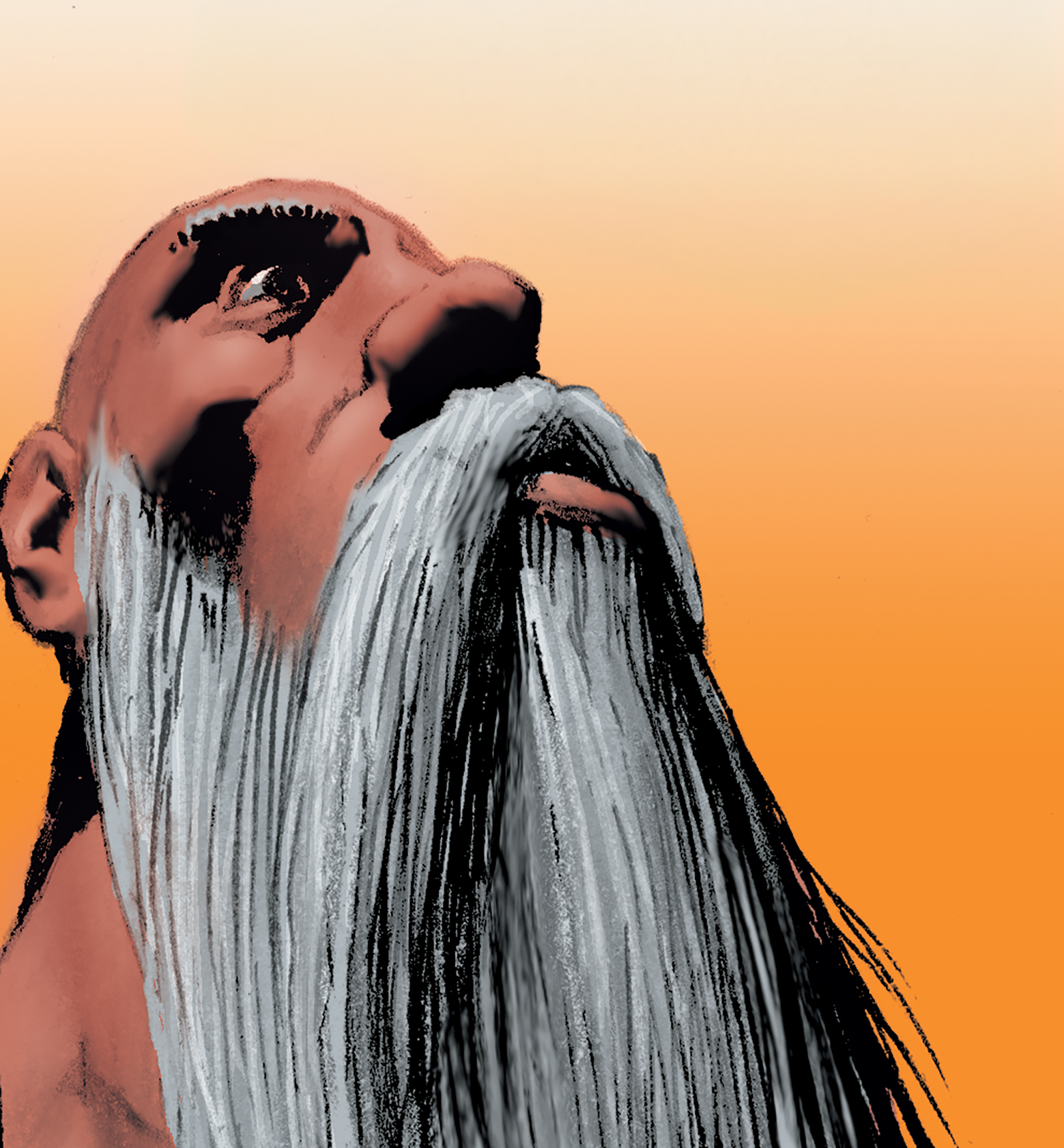RICHARD CORBEN INTERVIEW
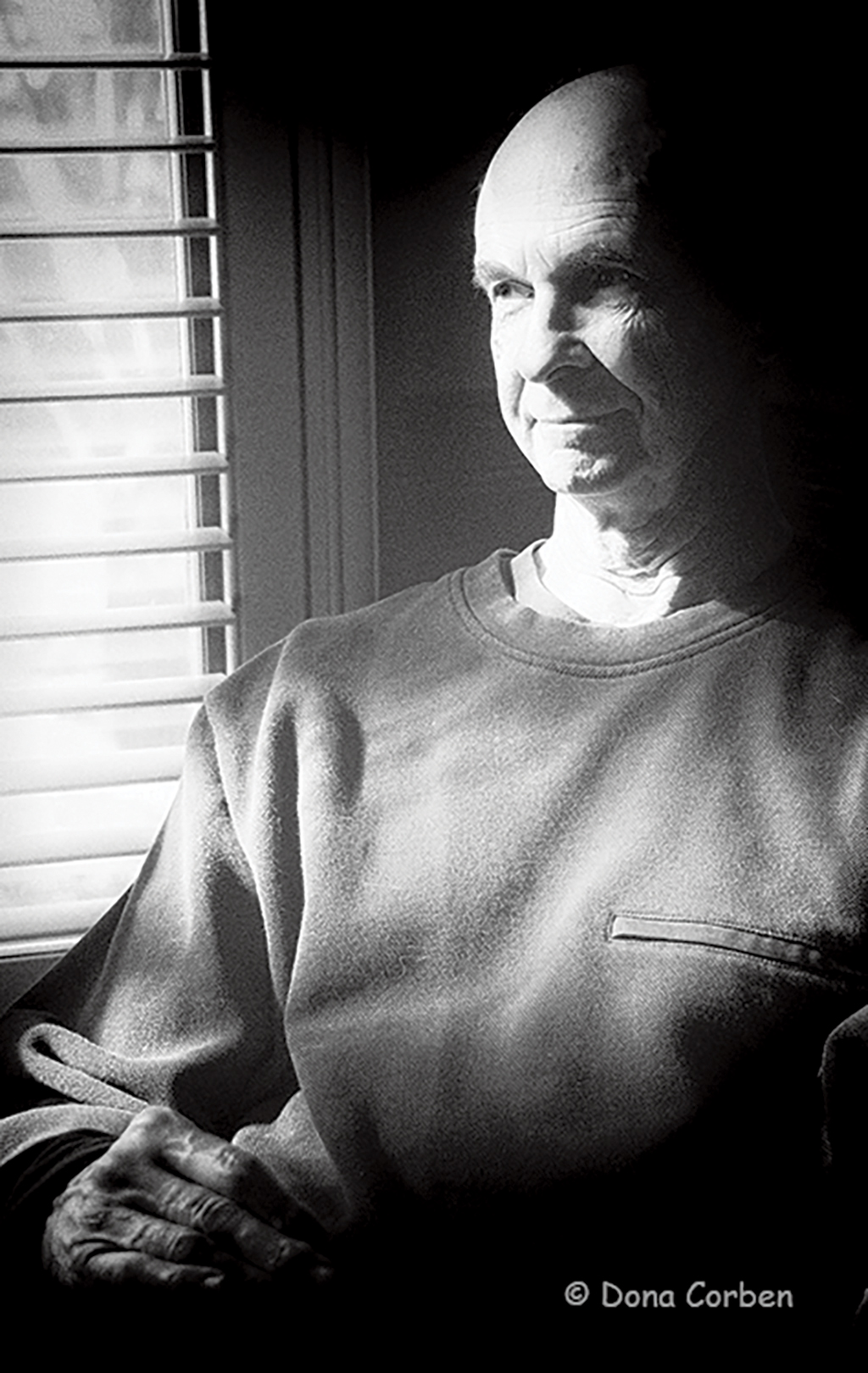
HEAVY METAL: In the Heavy Metal film, we had a segment with DEN; what was your take on that part of the movie, and has there been any serious pursuit in creating a DEN movie in that vein since the HM movie was released?
RICHARD CORBEN: I'm afraid my opinion of Heavy Metal the movie is that it is a very uneven production. Some segments were done with a lot of care with the animation and detail; others seem to have been rushed through. The Den segment looked to be produced by an inexperienced animation team. However, I did like John Candy's voice rendition of Den.
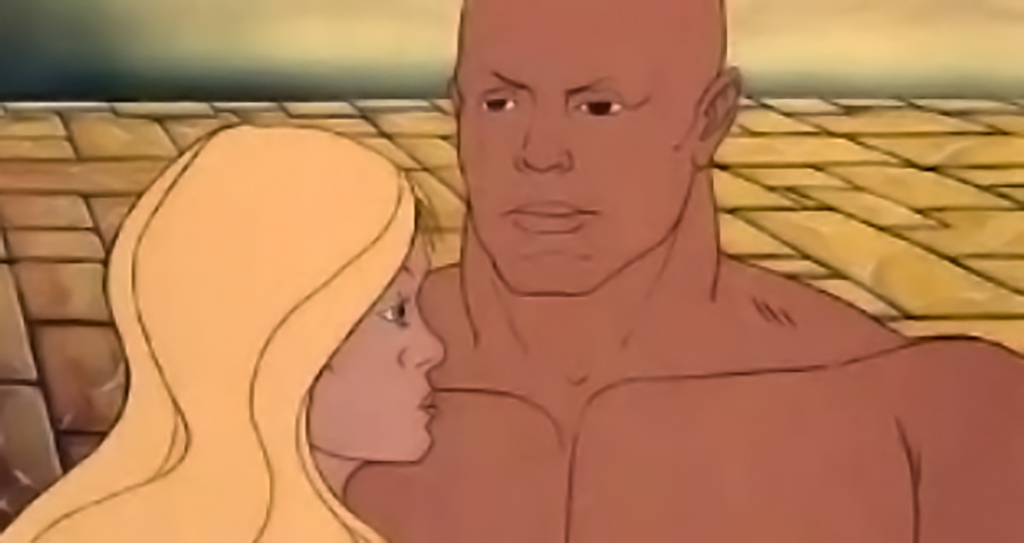
HM: What did Heavy Metal mean to you in 1981, and what does it mean to you now in 2020?
RC: Of course I was extremely excited when I first saw the movie in the theater on a big screen, but I was less than thrilled when it was over. Embarrassed would better describe my reaction. Now, looking back, it seems less important to me. I think the producers were hoping that a bigger audience would be attracted to the rock music in much of the music tracks.
HM: Where do you see comics today compared to where they were in your earliest beginnings in working in Underground comics?
RC: My career in comics began in the amateur world of comic fanzines and the underground comix. It was such a wonderful and free time for me. I could draw anything I wanted with at least some hint of payment from the underground features. They have all but disappeared now. I found that if I wanted to make any sort of career in comics, I would have to cultivate a business relationship with the bigger publishers like Marvel and DC. This wasn't easy because, although I had developed a small reputation in the undergrounds, I had no experience or interest in drawing costumed super heroes. The editors at the large companies weren't impressed. So I found myself starting over.
HM: One technical question, with all of technology at your disposal today, have you moved to the digital landscape, or is everything still hand painted, or is it a combination of the two?
RC: The fanzines and underground comix were technically unsophisticated. They were created and drawn by unsophisticated cartoonists like me. In some ways, I miss that simplicity. Titles like Skull and Slow Death had color covers with the colors produced by hand-made overlays. I practiced these techniques and got pretty good with the methods. These days virtually all comics go through computers at some point. A basic black and white drawing on paper is usually the starting point. It is then scanned into a digital file and colored using computer paint programs. Now I embrace these technical methods because they are fast and I am in control of the final effect.
HM: With Murky World coming to an end, what is next for you in the comics world, where can we find Murky World, and will there be another serial in Heavy Metal in your future?
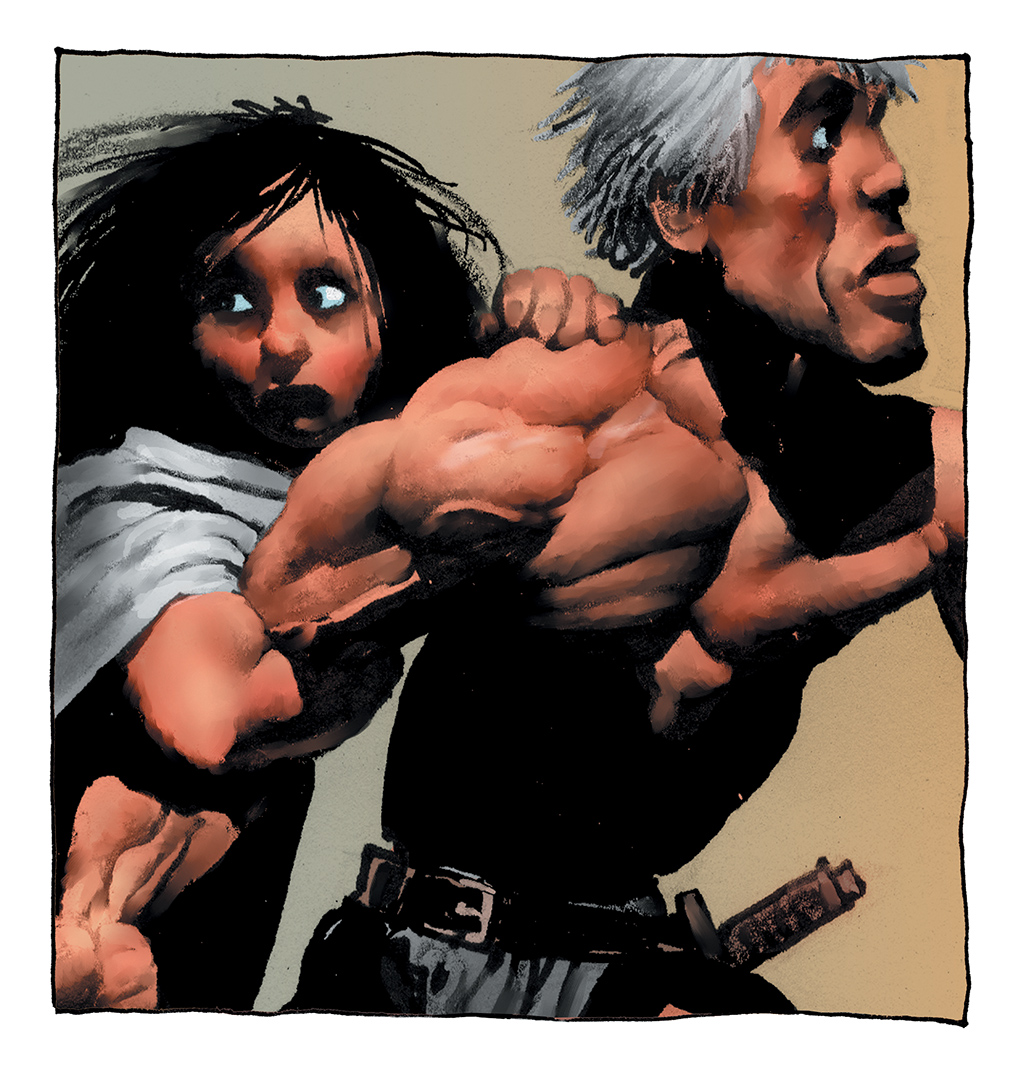
RC: When the editors of Heavy Metal came to an agreement about Murky World, very little of it had been completed. I was worried that I wouldn't be able to keep up with Heavy Metal's publication schedule; but, the magazine has been a bit sporadic so I didn't have to worry. I hope to be able to publish the collected version of Murky World myself.
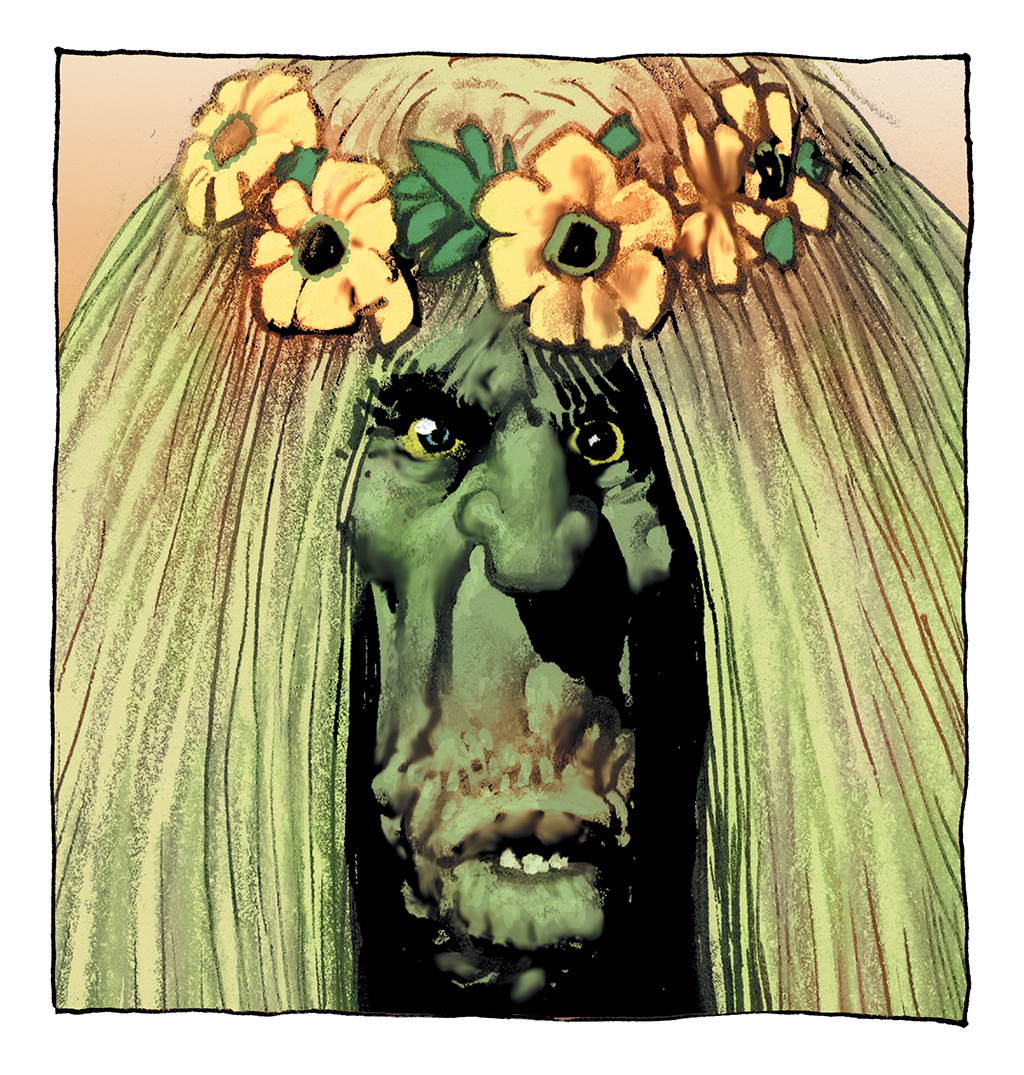
Not only did I finish Murky World ahead of time, I also worked extensively on a new story, "Dimwood," and now that is nearing completion. It has not been sold at this time and I am thinking ahead to another story after Dimwood. I have many projects I'd love to do. Retirement is not one of them.
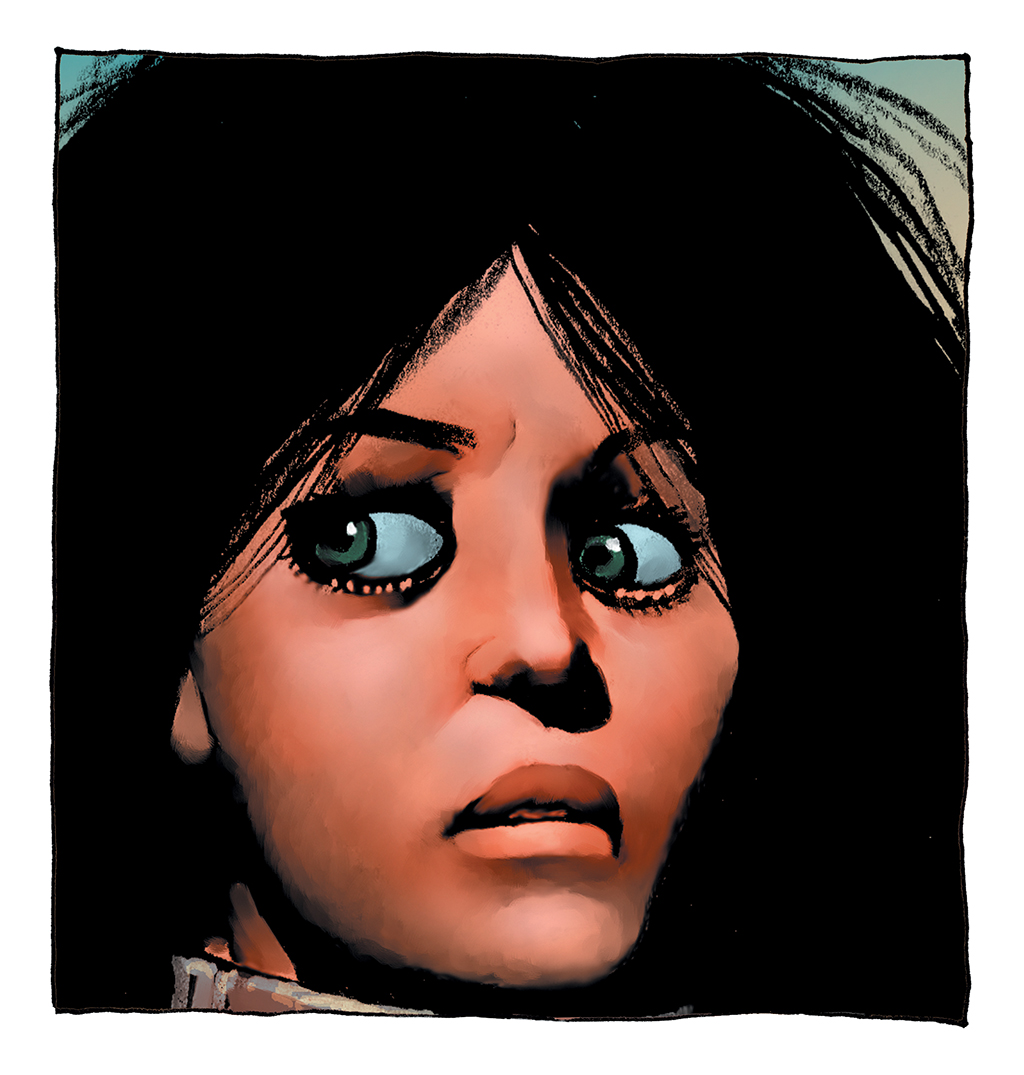
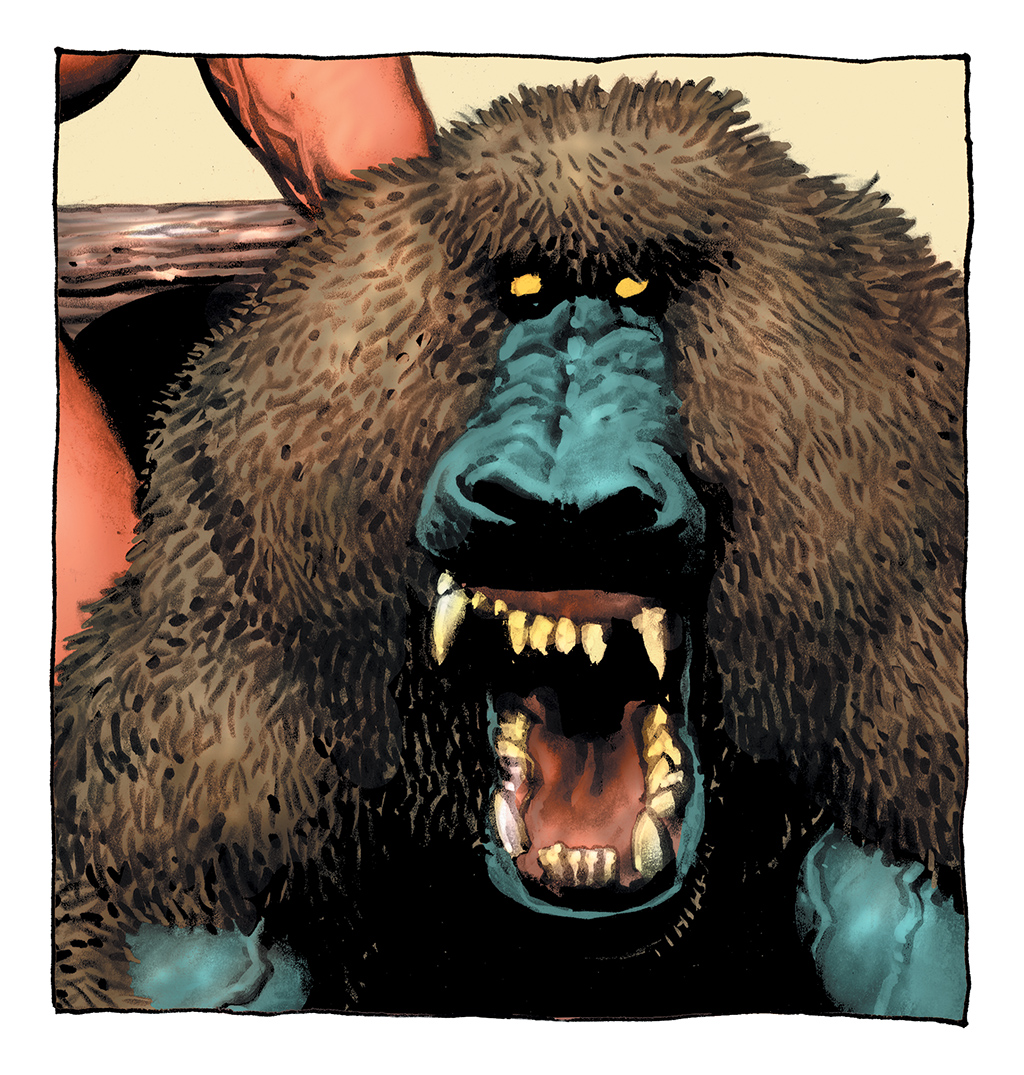
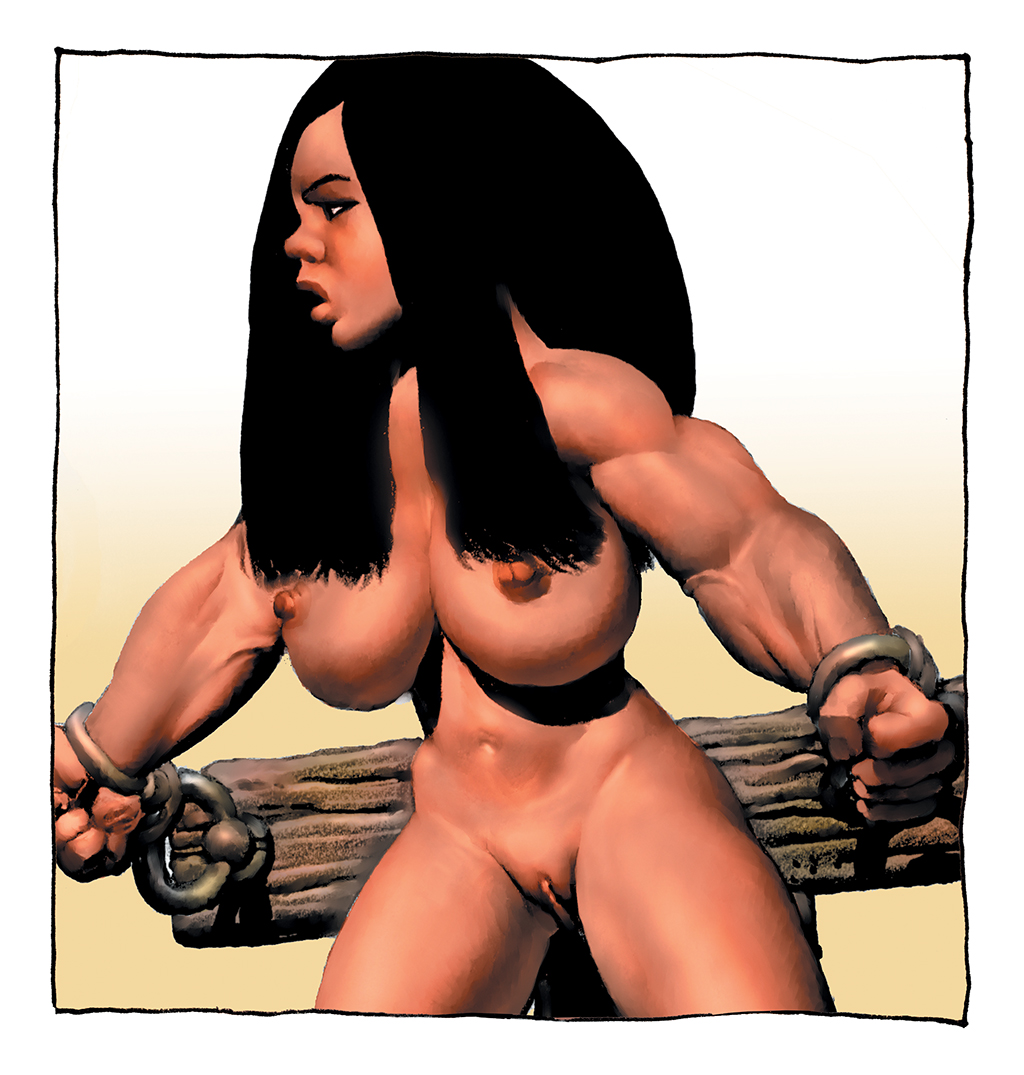
MM: We all know that comics are a popular place to find source material for film and television. Your story, "To Meet The Faces You Meet," is presently being made into an animated film and it’s more than halfway through production. Are you excited for what has been done, and what should fans expect from it?
RC: Jeff Williams is a talented music and video producer based in Springfield, Missouri. He is also a fan of Jan Strnad's and my old story, "To Meet the Faces You Meet." With our permission, he started developing the story into a movie feature. He has taken it to an extreme that I couldn't even imagine. The special effects are amazing. He did a Kickstarter project to help raise the funds to hire actors and complete the movie. Yes, I am very excited about it and so is Jan.
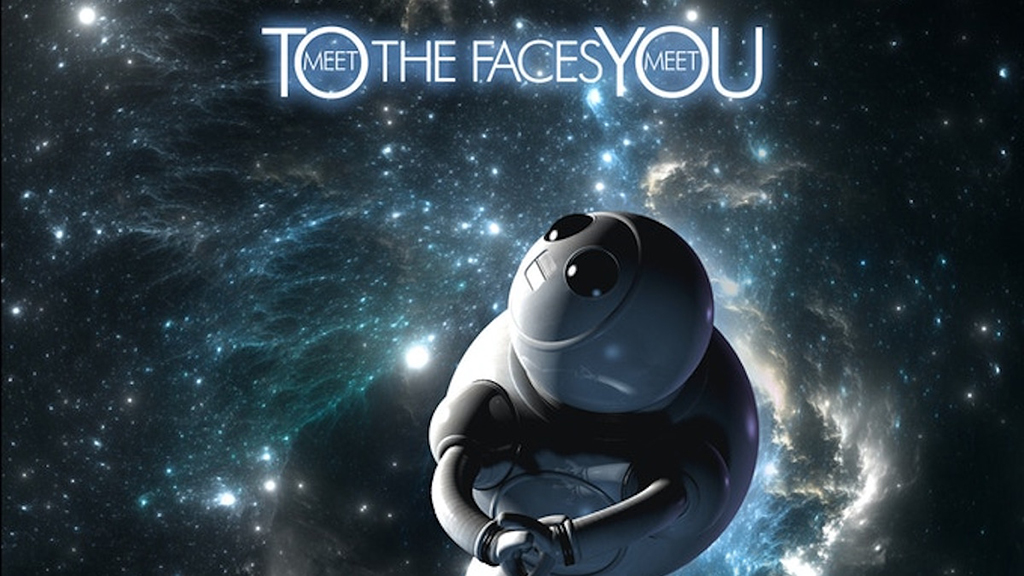
HM: We all know that every now and then the “would-be” collaboration with Hayao Miyazaki on an adaptation of his story "Rowlf" flares up. What can you say about those rumors today, mostly fiction? Some fact? Or no comment? ;)
RC: I'm afraid I don't know anything about Hayao Miyazaki or his work. So if there is a collaboration between him and me, I don't know about it.
HM: Follow Up. Should Heavy Metal produce this for you?
RC: I didn't know that Heavy Metal was producing movies.
HM: I have to ask, there is a legend about how you did your own color separations by hand, (which is insane by the way). But If I understand correctly, you drew your stories in three colors on separate sheets of acetate so that when layered together they made the correct image. I don't know how much of this is true but, it's a legendary "nobody but Corben could ever do this" anecdote, I would love to hear more about this.
RC: Early in my comic career when I was trying to produce comics with as much control as possible, I thought my comics would be more attractive to editors and publishers if I could offer something more than other cartoonists. I had done a couple covers for the underground comix using the acetate overlays with "zip-a-tone" screens for the color tints. Yes, there was a separate overlay for each printing ink, including magenta, cyan, and yellow. Later, I also developed another technique that allowed a continuous tone overlay that is with wash and airbrushed effects. Of course, this has all been superseded by computer color which makes possible a vast number of colors with much more control and ease.
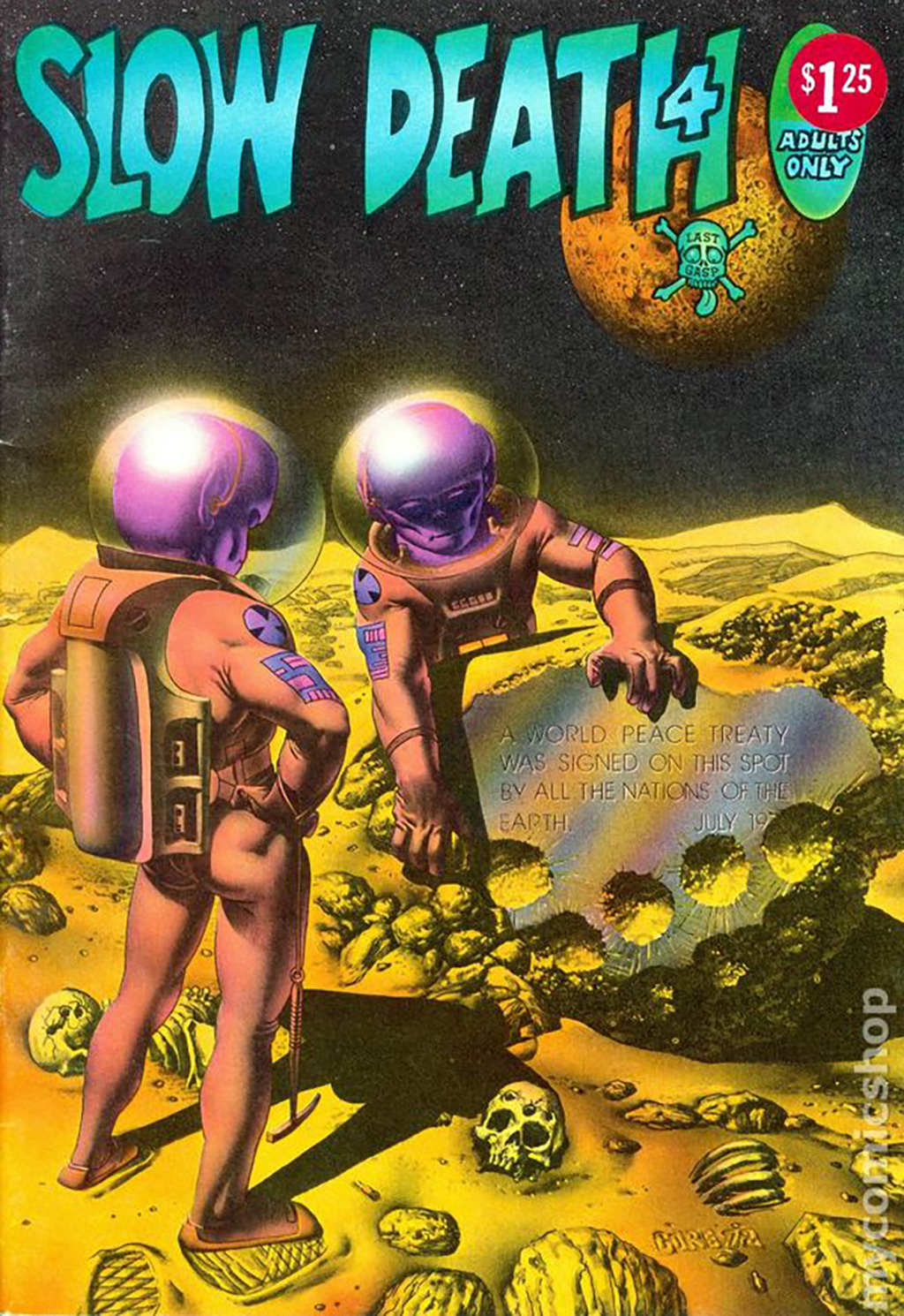
HM: During the early '70s you had a lot of really incredibly edgy comics outside of the mainstream publishers, can you take us on a journey of that time? What were the hardships versus the benefits?
RC: We all do things in our youth that we'd like to forget, and wish everyone else would forget as well. But actually, the only thing "edgy" about the comics I did during that time was depicting full nudity of men and women, which has been done by artists and shown in galleries since the beginning of time. I guess the only real benefit was that it put me in the spotlight. The hardships were the shocked attitudes of some fans and being known as an artist that only draws naked people.
HM: You had created covers and horror shorts for Warren publishing, which was a magazine format, rather than the traditional comic book format. Then the French market hit where they like bizarre things and don't even mind frontal male nudity. And then against all odds, the French magazine has a bastard stepchild (US!) in the USA and somehow you find a way to bring your weird stuff to your puritanical homeland. It must have been quite a rollercoaster ride from '70 to '77. Can you reflect on this time, take us through those crucial years of uncertainty and then success. Did you consider giving up, or (as some indie guys did) going to work for Marvel/DC?
RC: I rather enjoyed my time drawing comics for Warren Publishing. Then when the undergrounds appeared, I embraced the freedom of their rebel efforts. I was invited to contribute to the French adult magazine, Metal Hurlant. I was happy to be associated with their slick sophisticated appearance and be showcased with some of the greatest cartoonists who ever lived. The publishers of National Lampoon wanted to produce an American version of the French magazine; and, they also wanted to have all of their cartoonists involved. So, I was now in Heavy Metal. But, the best of times change including tastes and trends in publishing. We had started our own publishing company when the times were good, which we then had to suspend along with other independent publishers. I found I had to change my ways or forget the idea of being a cartoonist. Luckily, Mark Chiarello, a senior editor at DC, asked me to do a Batman story for his special, Batman Black and White. I did it and more work followed for DC, Vertigo, and Marvel. After I drew some Hellboy stories for Dark Horse, they allowed me to do some of my own projects. Now, I am independent again and produce my own comics all of the time.
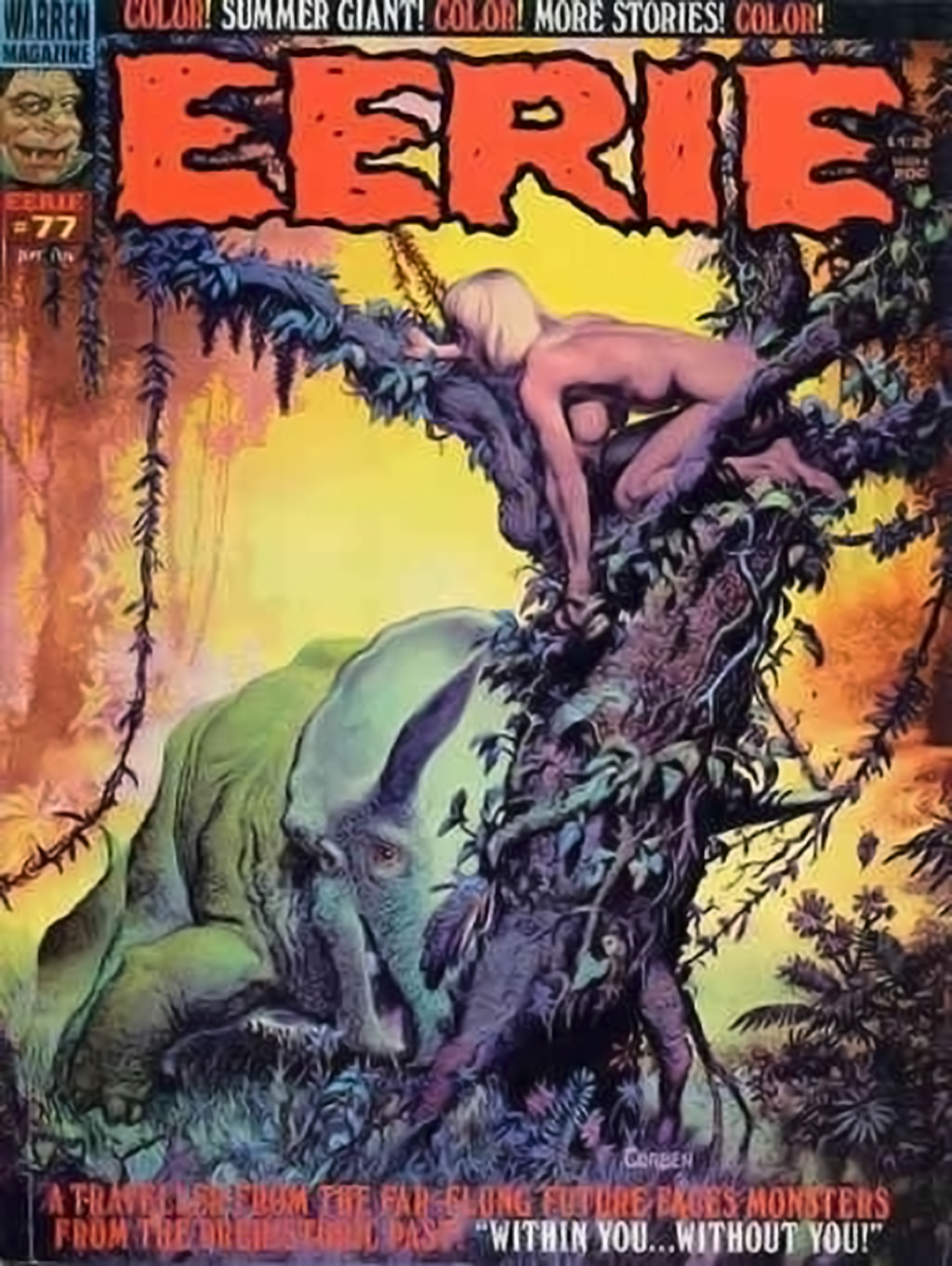
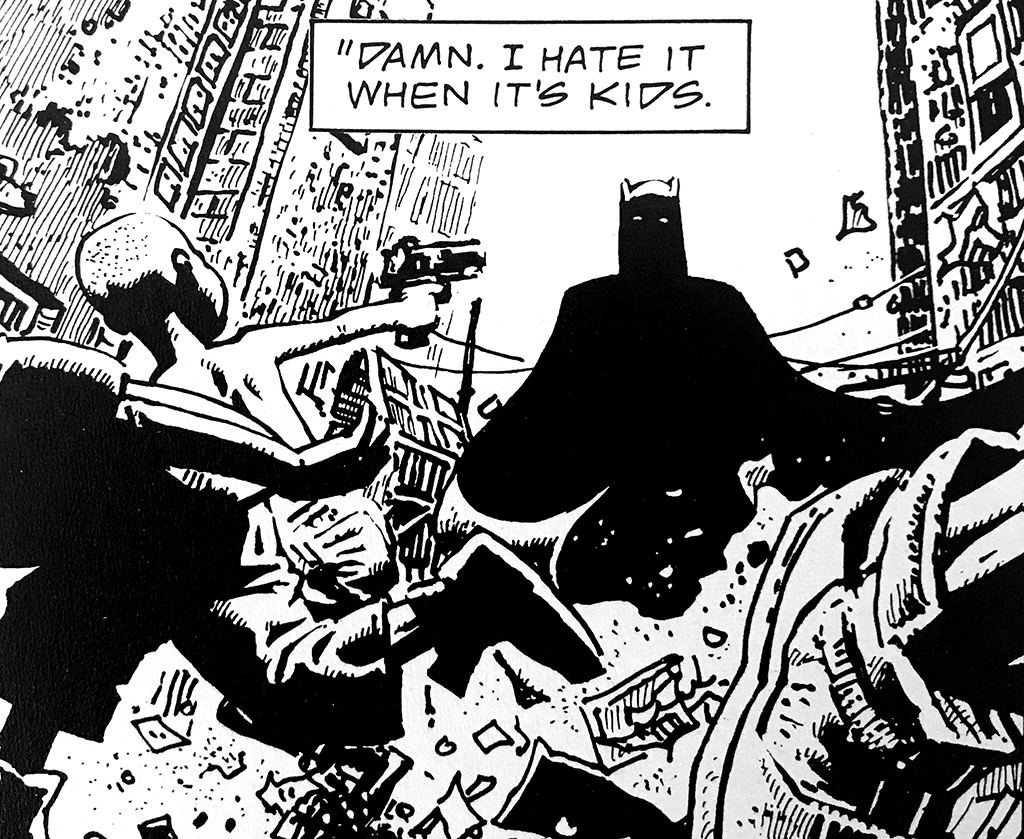
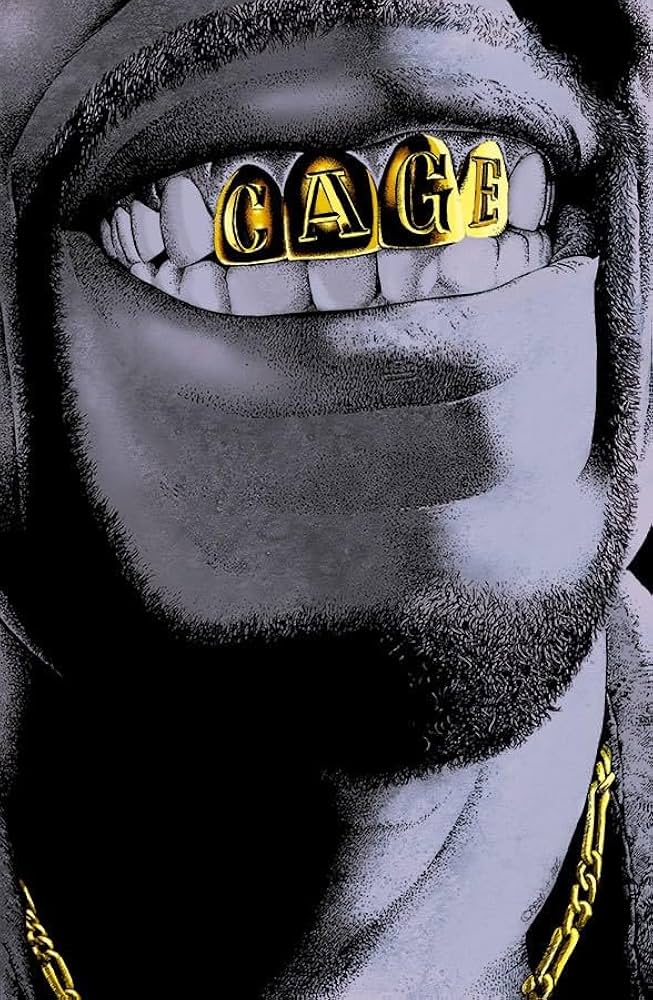
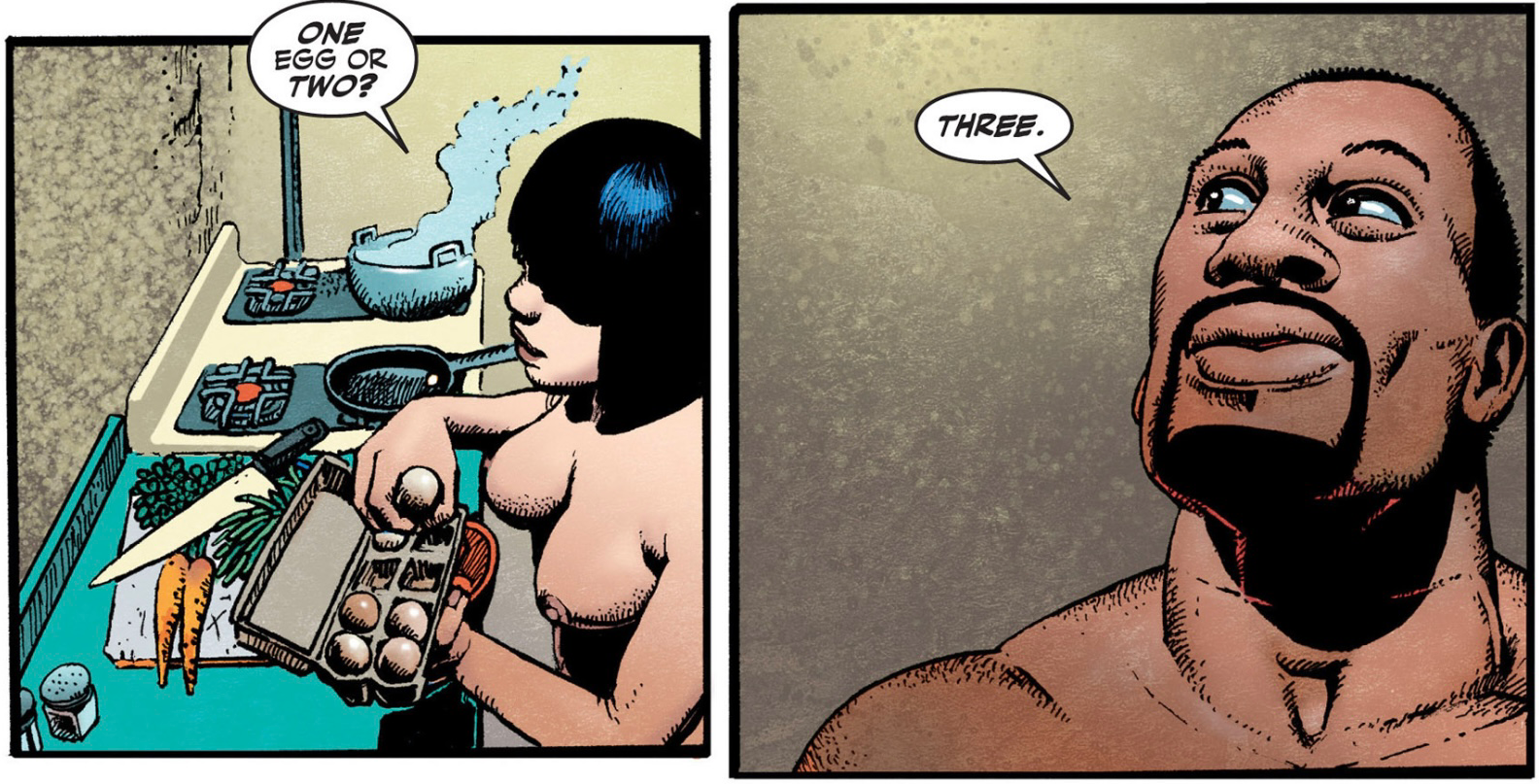
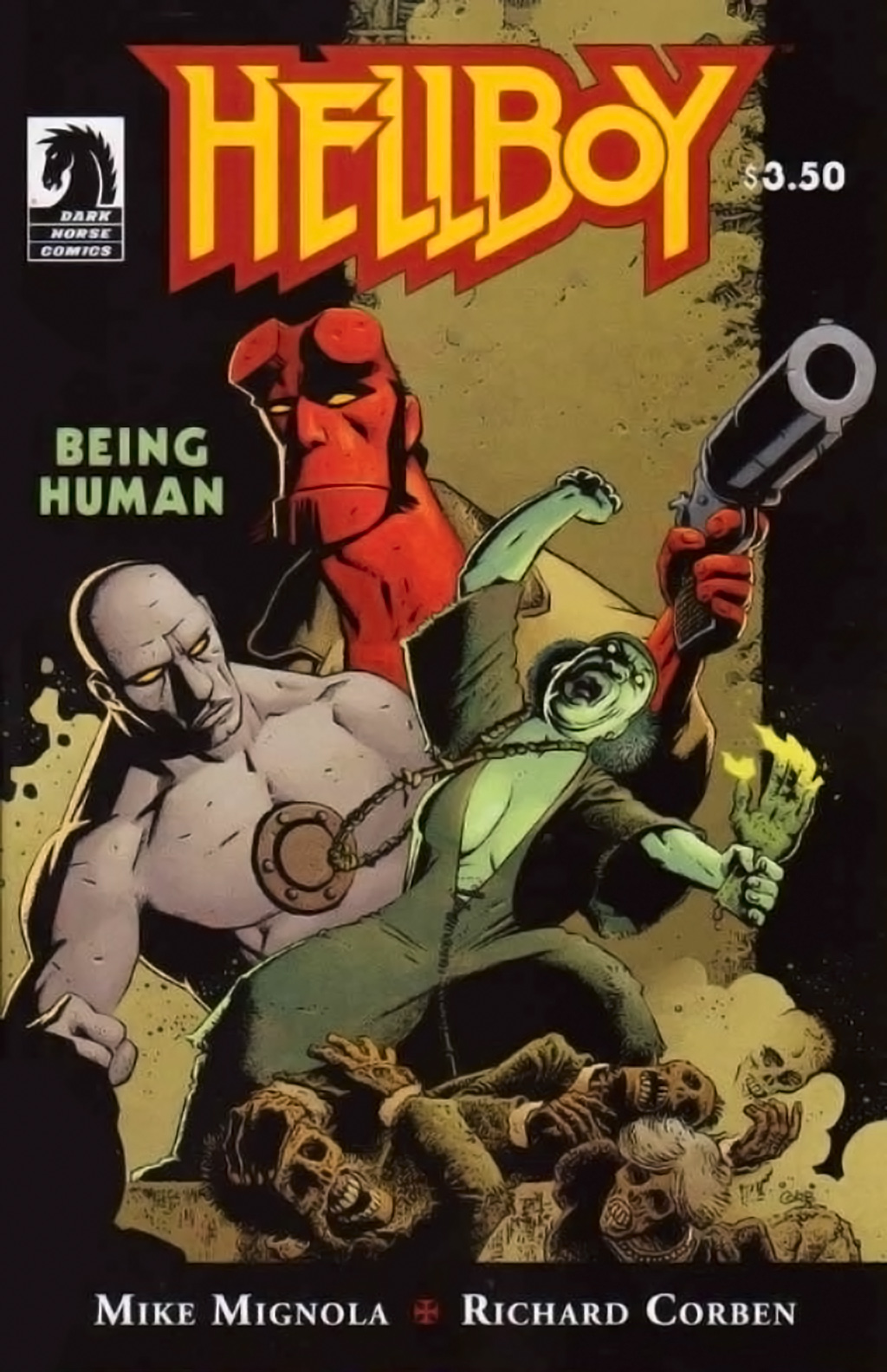
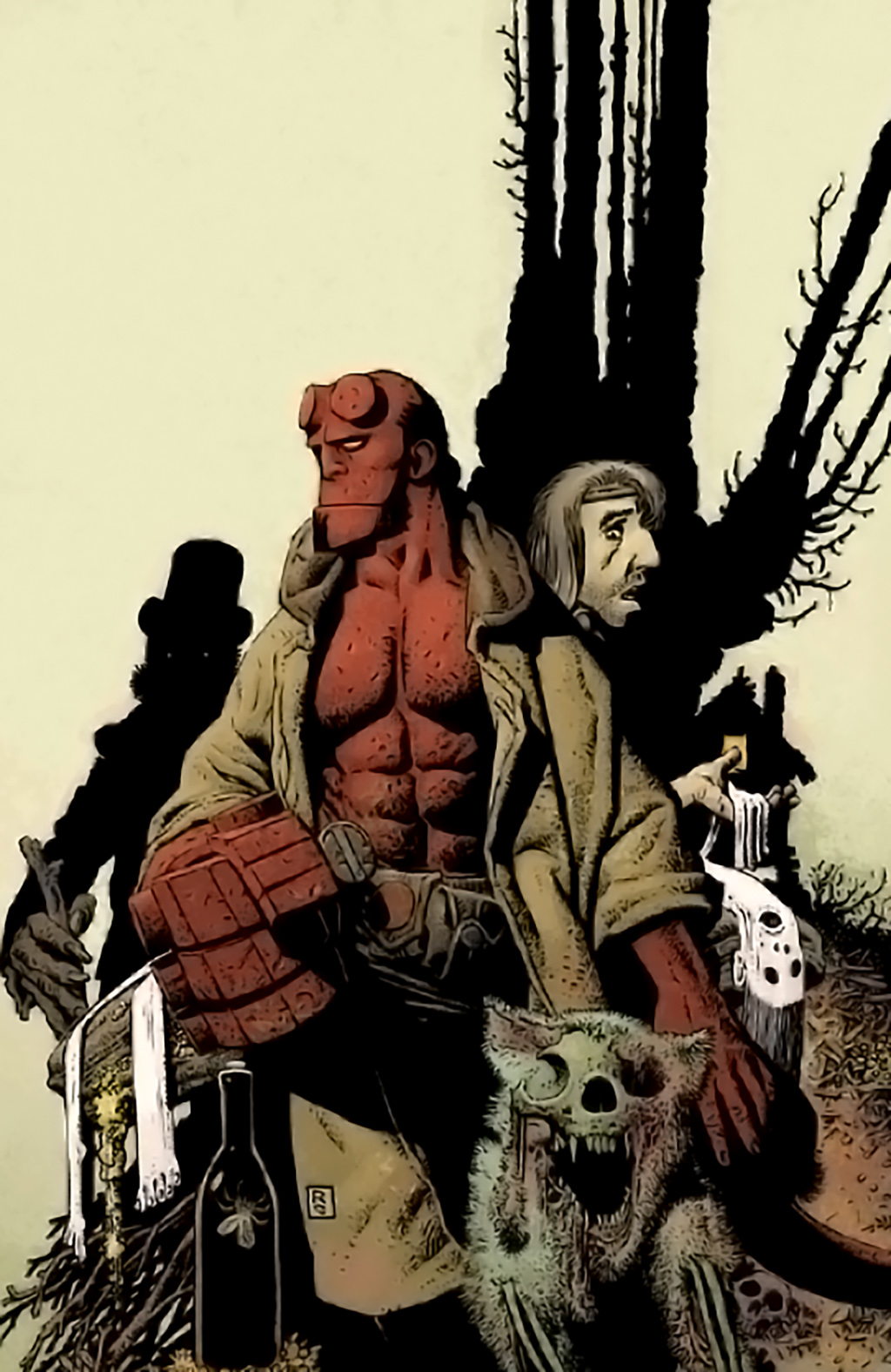
HM: You talked about “wanting to make art movies” in your 1981 Heavy Metal magazine interview, can you speak to how you feel the last 30+ years have gone in regards to this personal mandate you had during your original interview.
RC: I always loved animated movies and at one time I thought I would be working full time for a big production company. This didn't happen, but I still love animation. I had done animation on 8mm film dating back to my grade school years. In college, my senior project was an animated movie based on the Greek myths about Hercules. The advent of computer animation programs has enabled many animators to produce their own movies. This I still do, for enjoyment.
HM: Richard, we are living in unprecedented times. With all the incredible lens into the realms of science fiction you’ve delved into, could you have ever imagined something like this happening?
RC: Virtually all scenarios depicting mankind’s future, good and bad, have been explored in Science Fiction writing. In world history, there have been many episodes of epidemics. It seems such a catastrophe is inevitable.
HM: Could you walk us through the process of “Corben Creating”? How did the “Nobody but Corben could have done this” happen. How do you approach art from a technical and creative perspective?
RC: Of course, it is the basic idea which could come from any source that gets the creative juices flowing. Developing the idea into an interesting Corben story is the hard part, and it is really hard. Most of my concepts falter and are abandoned at this point. The idea of a pictorial style seems to grow of its own accord.
HM: Last question: If you could take any of the stories you’ve written and turn it into a movie today, which would it be?
RC: The movie industry is far removed from any scenario that I would like to see produce a story of mine. I think any producer looking for a property is looking to develop their own idea about the story, so any relation to the original story is tenuous at best, or nonexistent. Currently, I am happy doing my own animations as naive as they may be.
RICHARD CORBEN INTERVIEW

HEAVY METAL: In the Heavy Metal film, we had a segment with DEN; what was your take on that part of the movie, and has there been any serious pursuit in creating a DEN movie in that vein since the HM movie was released?
RICHARD CORBEN: I'm afraid my opinion of Heavy Metal the movie is that it is a very uneven production. Some segments were done with a lot of care with the animation and detail; others seem to have been rushed through. The Den segment looked to be produced by an inexperienced animation team. However, I did like John Candy's voice rendition of Den.

HM: What did Heavy Metal mean to you in 1981, and what does it mean to you now in 2020?
RC: Of course I was extremely excited when I first saw the movie in the theater on a big screen, but I was less than thrilled when it was over. Embarrassed would better describe my reaction. Now, looking back, it seems less important to me. I think the producers were hoping that a bigger audience would be attracted to the rock music in much of the music tracks.
HM: Where do you see comics today compared to where they were in your earliest beginnings in working in Underground comics?
RC: My career in comics began in the amateur world of comic fanzines and the underground comix. It was such a wonderful and free time for me. I could draw anything I wanted with at least some hint of payment from the underground features. They have all but disappeared now. I found that if I wanted to make any sort of career in comics, I would have to cultivate a business relationship with the bigger publishers like Marvel and DC. This wasn't easy because, although I had developed a small reputation in the undergrounds, I had no experience or interest in drawing costumed super heroes. The editors at the large companies weren't impressed. So I found myself starting over.
HM: One technical question, with all of technology at your disposal today, have you moved to the digital landscape, or is everything still hand painted, or is it a combination of the two?
RC: The fanzines and underground comix were technically unsophisticated. They were created and drawn by unsophisticated cartoonists like me. In some ways, I miss that simplicity. Titles like Skull and Slow Death had color covers with the colors produced by hand-made overlays. I practiced these techniques and got pretty good with the methods. These days virtually all comics go through computers at some point. A basic black and white drawing on paper is usually the starting point. It is then scanned into a digital file and colored using computer paint programs. Now I embrace these technical methods because they are fast and I am in control of the final effect.
HM: With Murky World coming to an end, what is next for you in the comics world, where can we find Murky World, and will there be another serial in Heavy Metal in your future?

RC: When the editors of Heavy Metal came to an agreement about Murky World, very little of it had been completed. I was worried that I wouldn't be able to keep up with Heavy Metal's publication schedule; but, the magazine has been a bit sporadic so I didn't have to worry. I hope to be able to publish the collected version of Murky World myself.

Not only did I finish Murky World ahead of time, I also worked extensively on a new story, "Dimwood," and now that is nearing completion. It has not been sold at this time and I am thinking ahead to another story after Dimwood. I have many projects I'd love to do. Retirement is not one of them.



MM: We all know that comics are a popular place to find source material for film and television. Your story, "To Meet The Faces You Meet," is presently being made into an animated film and it’s more than halfway through production. Are you excited for what has been done, and what should fans expect from it?
RC: Jeff Williams is a talented music and video producer based in Springfield, Missouri. He is also a fan of Jan Strnad's and my old story, "To Meet the Faces You Meet." With our permission, he started developing the story into a movie feature. He has taken it to an extreme that I couldn't even imagine. The special effects are amazing. He did a Kickstarter project to help raise the funds to hire actors and complete the movie. Yes, I am very excited about it and so is Jan.

HM: We all know that every now and then the “would-be” collaboration with Hayao Miyazaki on an adaptation of his story "Rowlf" flares up. What can you say about those rumors today, mostly fiction? Some fact? Or no comment? ;)
RC: I'm afraid I don't know anything about Hayao Miyazaki or his work. So if there is a collaboration between him and me, I don't know about it.
HM: Follow Up. Should Heavy Metal produce this for you?
RC: I didn't know that Heavy Metal was producing movies.
HM: I have to ask, there is a legend about how you did your own color separations by hand, (which is insane by the way). But If I understand correctly, you drew your stories in three colors on separate sheets of acetate so that when layered together they made the correct image. I don't know how much of this is true but, it's a legendary "nobody but Corben could ever do this" anecdote, I would love to hear more about this.
RC: Early in my comic career when I was trying to produce comics with as much control as possible, I thought my comics would be more attractive to editors and publishers if I could offer something more than other cartoonists. I had done a couple covers for the underground comix using the acetate overlays with "zip-a-tone" screens for the color tints. Yes, there was a separate overlay for each printing ink, including magenta, cyan, and yellow. Later, I also developed another technique that allowed a continuous tone overlay that is with wash and airbrushed effects. Of course, this has all been superseded by computer color which makes possible a vast number of colors with much more control and ease.

HM: During the early '70s you had a lot of really incredibly edgy comics outside of the mainstream publishers, can you take us on a journey of that time? What were the hardships versus the benefits?
RC: We all do things in our youth that we'd like to forget, and wish everyone else would forget as well. But actually, the only thing "edgy" about the comics I did during that time was depicting full nudity of men and women, which has been done by artists and shown in galleries since the beginning of time. I guess the only real benefit was that it put me in the spotlight. The hardships were the shocked attitudes of some fans and being known as an artist that only draws naked people.
HM: You had created covers and horror shorts for Warren publishing, which was a magazine format, rather than the traditional comic book format. Then the French market hit where they like bizarre things and don't even mind frontal male nudity. And then against all odds, the French magazine has a bastard stepchild (US!) in the USA and somehow you find a way to bring your weird stuff to your puritanical homeland. It must have been quite a rollercoaster ride from '70 to '77. Can you reflect on this time, take us through those crucial years of uncertainty and then success. Did you consider giving up, or (as some indie guys did) going to work for Marvel/DC?
RC: I rather enjoyed my time drawing comics for Warren Publishing. Then when the undergrounds appeared, I embraced the freedom of their rebel efforts. I was invited to contribute to the French adult magazine, Metal Hurlant. I was happy to be associated with their slick sophisticated appearance and be showcased with some of the greatest cartoonists who ever lived. The publishers of National Lampoon wanted to produce an American version of the French magazine; and, they also wanted to have all of their cartoonists involved. So, I was now in Heavy Metal. But, the best of times change including tastes and trends in publishing. We had started our own publishing company when the times were good, which we then had to suspend along with other independent publishers. I found I had to change my ways or forget the idea of being a cartoonist. Luckily, Mark Chiarello, a senior editor at DC, asked me to do a Batman story for his special, Batman Black and White. I did it and more work followed for DC, Vertigo, and Marvel. After I drew some Hellboy stories for Dark Horse, they allowed me to do some of my own projects. Now, I am independent again and produce my own comics all of the time.






HM: You talked about “wanting to make art movies” in your 1981 Heavy Metal magazine interview, can you speak to how you feel the last 30+ years have gone in regards to this personal mandate you had during your original interview.
RC: I always loved animated movies and at one time I thought I would be working full time for a big production company. This didn't happen, but I still love animation. I had done animation on 8mm film dating back to my grade school years. In college, my senior project was an animated movie based on the Greek myths about Hercules. The advent of computer animation programs has enabled many animators to produce their own movies. This I still do, for enjoyment.
HM: Richard, we are living in unprecedented times. With all the incredible lens into the realms of science fiction you’ve delved into, could you have ever imagined something like this happening?
RC: Virtually all scenarios depicting mankind’s future, good and bad, have been explored in Science Fiction writing. In world history, there have been many episodes of epidemics. It seems such a catastrophe is inevitable.
HM: Could you walk us through the process of “Corben Creating”? How did the “Nobody but Corben could have done this” happen. How do you approach art from a technical and creative perspective?
RC: Of course, it is the basic idea which could come from any source that gets the creative juices flowing. Developing the idea into an interesting Corben story is the hard part, and it is really hard. Most of my concepts falter and are abandoned at this point. The idea of a pictorial style seems to grow of its own accord.
HM: Last question: If you could take any of the stories you’ve written and turn it into a movie today, which would it be?
RC: The movie industry is far removed from any scenario that I would like to see produce a story of mine. I think any producer looking for a property is looking to develop their own idea about the story, so any relation to the original story is tenuous at best, or nonexistent. Currently, I am happy doing my own animations as naive as they may be.
Announcements
Newsletter
Browse by tag

HEAVY METAL: In the Heavy Metal film, we had a segment with DEN; what was your take on that part of the movie, and has there been any serious pursuit in creating a DEN movie in that vein since the HM movie was released?
RICHARD CORBEN: I'm afraid my opinion of Heavy Metal the movie is that it is a very uneven production. Some segments were done with a lot of care with the animation and detail; others seem to have been rushed through. The Den segment looked to be produced by an inexperienced animation team. However, I did like John Candy's voice rendition of Den.

HM: What did Heavy Metal mean to you in 1981, and what does it mean to you now in 2020?
RC: Of course I was extremely excited when I first saw the movie in the theater on a big screen, but I was less than thrilled when it was over. Embarrassed would better describe my reaction. Now, looking back, it seems less important to me. I think the producers were hoping that a bigger audience would be attracted to the rock music in much of the music tracks.
HM: Where do you see comics today compared to where they were in your earliest beginnings in working in Underground comics?
RC: My career in comics began in the amateur world of comic fanzines and the underground comix. It was such a wonderful and free time for me. I could draw anything I wanted with at least some hint of payment from the underground features. They have all but disappeared now. I found that if I wanted to make any sort of career in comics, I would have to cultivate a business relationship with the bigger publishers like Marvel and DC. This wasn't easy because, although I had developed a small reputation in the undergrounds, I had no experience or interest in drawing costumed super heroes. The editors at the large companies weren't impressed. So I found myself starting over.
HM: One technical question, with all of technology at your disposal today, have you moved to the digital landscape, or is everything still hand painted, or is it a combination of the two?
RC: The fanzines and underground comix were technically unsophisticated. They were created and drawn by unsophisticated cartoonists like me. In some ways, I miss that simplicity. Titles like Skull and Slow Death had color covers with the colors produced by hand-made overlays. I practiced these techniques and got pretty good with the methods. These days virtually all comics go through computers at some point. A basic black and white drawing on paper is usually the starting point. It is then scanned into a digital file and colored using computer paint programs. Now I embrace these technical methods because they are fast and I am in control of the final effect.
HM: With Murky World coming to an end, what is next for you in the comics world, where can we find Murky World, and will there be another serial in Heavy Metal in your future?

RC: When the editors of Heavy Metal came to an agreement about Murky World, very little of it had been completed. I was worried that I wouldn't be able to keep up with Heavy Metal's publication schedule; but, the magazine has been a bit sporadic so I didn't have to worry. I hope to be able to publish the collected version of Murky World myself.

Not only did I finish Murky World ahead of time, I also worked extensively on a new story, "Dimwood," and now that is nearing completion. It has not been sold at this time and I am thinking ahead to another story after Dimwood. I have many projects I'd love to do. Retirement is not one of them.



MM: We all know that comics are a popular place to find source material for film and television. Your story, "To Meet The Faces You Meet," is presently being made into an animated film and it’s more than halfway through production. Are you excited for what has been done, and what should fans expect from it?
RC: Jeff Williams is a talented music and video producer based in Springfield, Missouri. He is also a fan of Jan Strnad's and my old story, "To Meet the Faces You Meet." With our permission, he started developing the story into a movie feature. He has taken it to an extreme that I couldn't even imagine. The special effects are amazing. He did a Kickstarter project to help raise the funds to hire actors and complete the movie. Yes, I am very excited about it and so is Jan.

HM: We all know that every now and then the “would-be” collaboration with Hayao Miyazaki on an adaptation of his story "Rowlf" flares up. What can you say about those rumors today, mostly fiction? Some fact? Or no comment? ;)
RC: I'm afraid I don't know anything about Hayao Miyazaki or his work. So if there is a collaboration between him and me, I don't know about it.
HM: Follow Up. Should Heavy Metal produce this for you?
RC: I didn't know that Heavy Metal was producing movies.
HM: I have to ask, there is a legend about how you did your own color separations by hand, (which is insane by the way). But If I understand correctly, you drew your stories in three colors on separate sheets of acetate so that when layered together they made the correct image. I don't know how much of this is true but, it's a legendary "nobody but Corben could ever do this" anecdote, I would love to hear more about this.
RC: Early in my comic career when I was trying to produce comics with as much control as possible, I thought my comics would be more attractive to editors and publishers if I could offer something more than other cartoonists. I had done a couple covers for the underground comix using the acetate overlays with "zip-a-tone" screens for the color tints. Yes, there was a separate overlay for each printing ink, including magenta, cyan, and yellow. Later, I also developed another technique that allowed a continuous tone overlay that is with wash and airbrushed effects. Of course, this has all been superseded by computer color which makes possible a vast number of colors with much more control and ease.

HM: During the early '70s you had a lot of really incredibly edgy comics outside of the mainstream publishers, can you take us on a journey of that time? What were the hardships versus the benefits?
RC: We all do things in our youth that we'd like to forget, and wish everyone else would forget as well. But actually, the only thing "edgy" about the comics I did during that time was depicting full nudity of men and women, which has been done by artists and shown in galleries since the beginning of time. I guess the only real benefit was that it put me in the spotlight. The hardships were the shocked attitudes of some fans and being known as an artist that only draws naked people.
HM: You had created covers and horror shorts for Warren publishing, which was a magazine format, rather than the traditional comic book format. Then the French market hit where they like bizarre things and don't even mind frontal male nudity. And then against all odds, the French magazine has a bastard stepchild (US!) in the USA and somehow you find a way to bring your weird stuff to your puritanical homeland. It must have been quite a rollercoaster ride from '70 to '77. Can you reflect on this time, take us through those crucial years of uncertainty and then success. Did you consider giving up, or (as some indie guys did) going to work for Marvel/DC?
RC: I rather enjoyed my time drawing comics for Warren Publishing. Then when the undergrounds appeared, I embraced the freedom of their rebel efforts. I was invited to contribute to the French adult magazine, Metal Hurlant. I was happy to be associated with their slick sophisticated appearance and be showcased with some of the greatest cartoonists who ever lived. The publishers of National Lampoon wanted to produce an American version of the French magazine; and, they also wanted to have all of their cartoonists involved. So, I was now in Heavy Metal. But, the best of times change including tastes and trends in publishing. We had started our own publishing company when the times were good, which we then had to suspend along with other independent publishers. I found I had to change my ways or forget the idea of being a cartoonist. Luckily, Mark Chiarello, a senior editor at DC, asked me to do a Batman story for his special, Batman Black and White. I did it and more work followed for DC, Vertigo, and Marvel. After I drew some Hellboy stories for Dark Horse, they allowed me to do some of my own projects. Now, I am independent again and produce my own comics all of the time.






HM: You talked about “wanting to make art movies” in your 1981 Heavy Metal magazine interview, can you speak to how you feel the last 30+ years have gone in regards to this personal mandate you had during your original interview.
RC: I always loved animated movies and at one time I thought I would be working full time for a big production company. This didn't happen, but I still love animation. I had done animation on 8mm film dating back to my grade school years. In college, my senior project was an animated movie based on the Greek myths about Hercules. The advent of computer animation programs has enabled many animators to produce their own movies. This I still do, for enjoyment.
HM: Richard, we are living in unprecedented times. With all the incredible lens into the realms of science fiction you’ve delved into, could you have ever imagined something like this happening?
RC: Virtually all scenarios depicting mankind’s future, good and bad, have been explored in Science Fiction writing. In world history, there have been many episodes of epidemics. It seems such a catastrophe is inevitable.
HM: Could you walk us through the process of “Corben Creating”? How did the “Nobody but Corben could have done this” happen. How do you approach art from a technical and creative perspective?
RC: Of course, it is the basic idea which could come from any source that gets the creative juices flowing. Developing the idea into an interesting Corben story is the hard part, and it is really hard. Most of my concepts falter and are abandoned at this point. The idea of a pictorial style seems to grow of its own accord.
HM: Last question: If you could take any of the stories you’ve written and turn it into a movie today, which would it be?
RC: The movie industry is far removed from any scenario that I would like to see produce a story of mine. I think any producer looking for a property is looking to develop their own idea about the story, so any relation to the original story is tenuous at best, or nonexistent. Currently, I am happy doing my own animations as naive as they may be.











